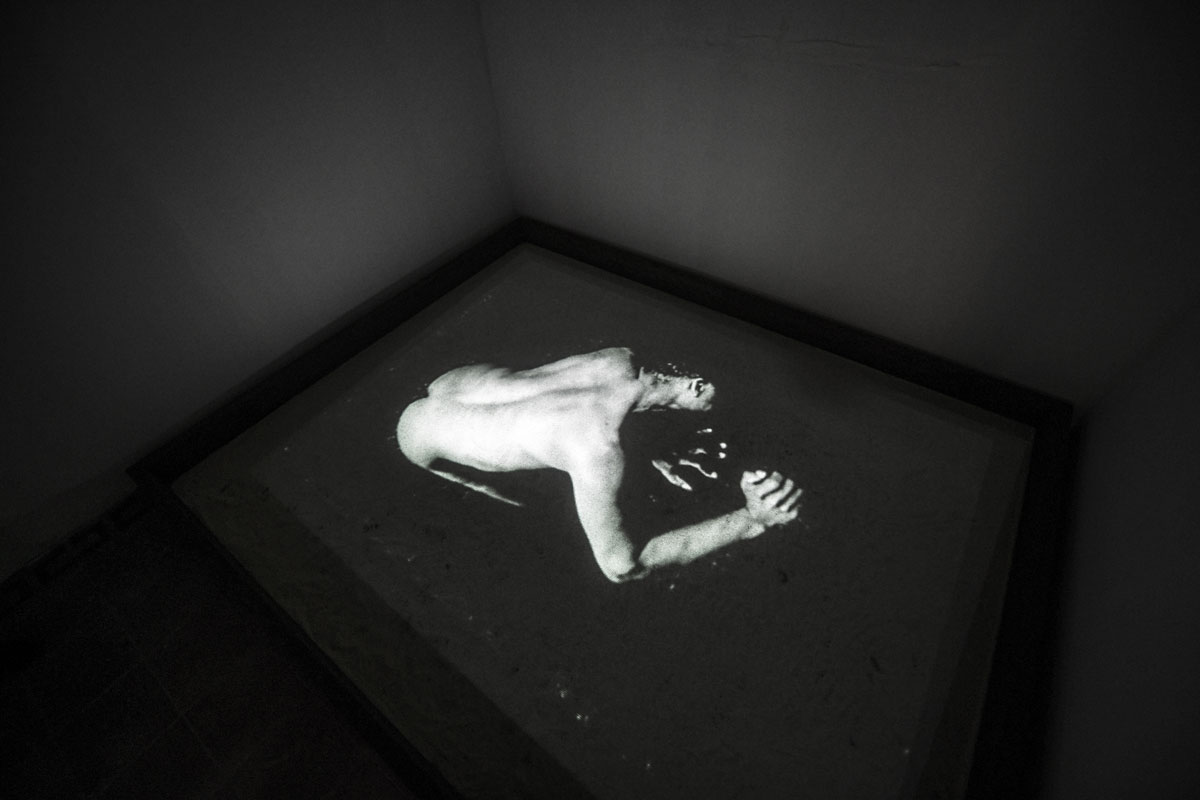Goddy Leye
1965 (Mbouda, Cameroun) - 2011 (Bonendale, Cameroun)
Lived and worked in Bonendale (Cameroun)
Goddy Leye (AKA Godfried Kadjo) was, and very much remains, a central figure on the Cameroonian contemporary art scene. His practice as a multi-media creator and, in particular, his pioneering video work introduced the latter genre to Central Africa in the 1990s. As a teacher and a mentor, he played a key role in the emergence of an entire generation of Cameroonian artists, several of whom have gone on to successful international careers. From 1986 to 1989, Leye attended the University of Yaoundé. While working on a Master’s degree in African literature (which he received in 1990), he simultaneously studied with art historian and artist Pascal Kenfack (1987-1992). From, there, he moved on to the National Institute in Bamako (Mali), where he studied in 1994, the ZKM Karlsruhe Centre for Art and Media (Germany, 1997), the 18th Street Arts Complex (Santa Monica, California, 1997), and the Rijksakademie van Beeldende Kunsten (Amsterdam, 2002). Determined to help develop the art scene in his native Cameroon, in 2002 Leye settled in the village of Bonendale, on the outskirts of Douala, the country’s economic capital. There, he founded the Art Bakery, a research and residency space where he welcomed young artists in quest of training in multimedia, installation, video and digital practices. While numerous projects and residencies took him abroad on a regular basis (to London, Cairo, Guangzhou and multiple cities in between), he always returned to the Art Bakery, his primary focus from 2002 until his untimely passing in 2011. Leye received key prizes for his work as an artist and an educator from the Dutch Ministry of Foreign Affairs, the Rockefeller Foundation and UNESCO. An ambassador for the Creative Africa Network (CAN), he sat on expert committees the world over.
Goddy Leye’s iconic video The Beautiful Beast is on view at KB17. In it, a man writhes on the ground against a pixelated field. We know nothing of him, save that he seems in pain. Or might he be grinning? The image is violently disturbing. Overhead, coming in waves, is a soundscape: Fritz Lang’s 1927 masterpiece, “M”. A Hitlerian voice battles with another, a voice of reason and demand: demand that the man on the ground be treated with care or perhaps, simply, with basic human sympathy. We will never know which voice wins out.

The Beautiful Beast, 2009.
Video and sound installation projected on a bed of sesame seeds, 4:38 (looped)
© Goddy Leye
Courtesy of the artist’s estate and Galerie Peter Hermann, Lomé, Togo
Curated by SPARCK.

